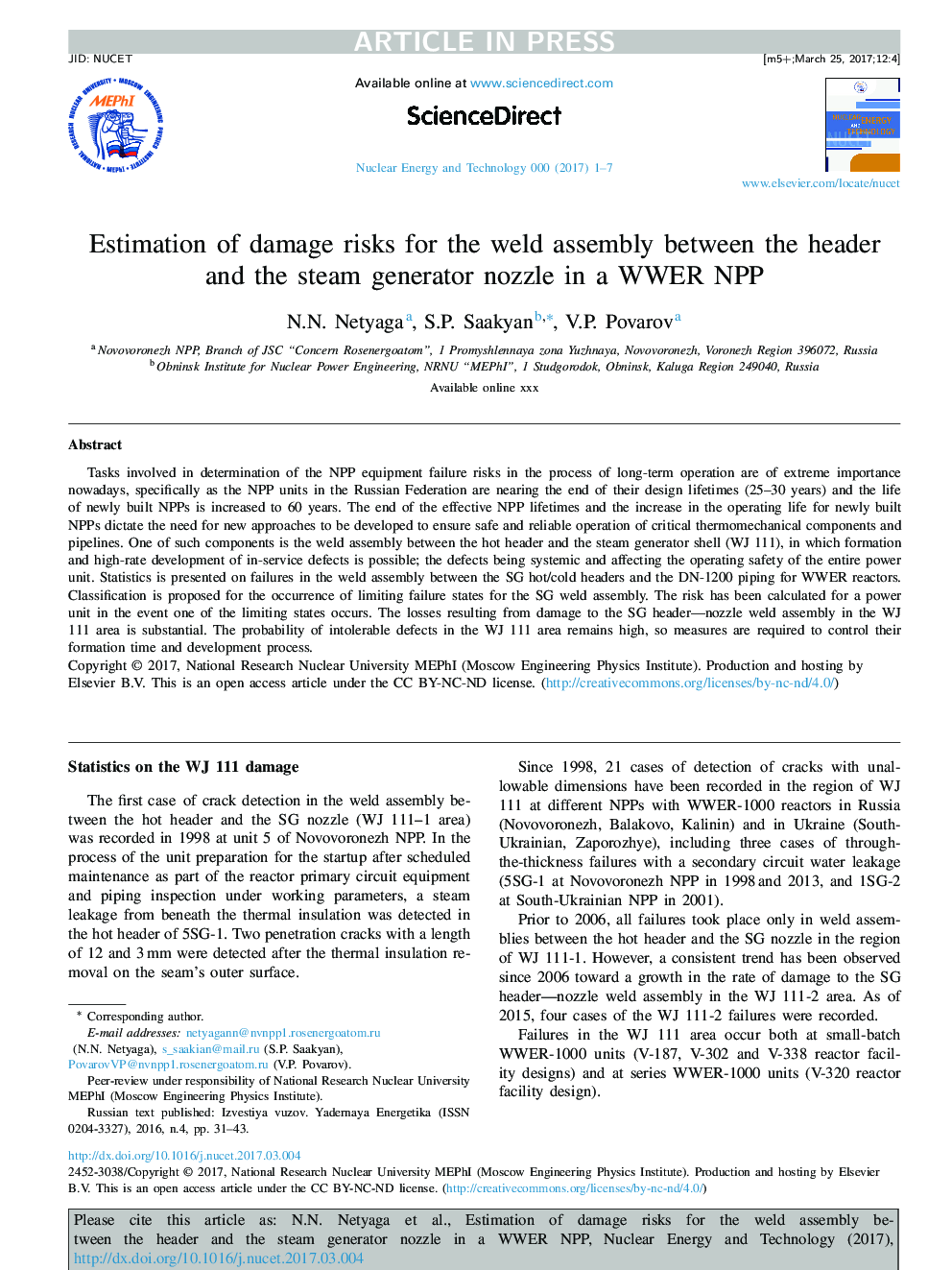| Article ID | Journal | Published Year | Pages | File Type |
|---|---|---|---|---|
| 6846108 | Nuclear Energy and Technology | 2017 | 7 Pages |
Abstract
Tasks involved in determination of the NPP equipment failure risks in the process of long-term operation are of extreme importance nowadays, specifically as the NPP units in the Russian Federation are nearing the end of their design lifetimes (25-30 years) and the life of newly built NPPs is increased to 60 years. The end of the effective NPP lifetimes and the increase in the operating life for newly built NPPs dictate the need for new approaches to be developed to ensure safe and reliable operation of critical thermomechanical components and pipelines. One of such components is the weld assembly between the hot header and the steam generator shell (WJ 111), in which formation and high-rate development of in-service defects is possible; the defects being systemic and affecting the operating safety of the entire power unit. Statistics is presented on failures in the weld assembly between the SG hot/cold headers and the DN-1200 piping for WWER reactors. Classification is proposed for the occurrence of limiting failure states for the SG weld assembly. The risk has been calculated for a power unit in the event one of the limiting states occurs. The losses resulting from damage to the SG header-nozzle weld assembly in the WJ 111 area is substantial. The probability of intolerable defects in the WJ 111 area remains high, so measures are required to control their formation time and development process.
Related Topics
Physical Sciences and Engineering
Energy
Nuclear Energy and Engineering
Authors
N.N. Netyaga, S.P. Saakyan, V.P. Povarov,
